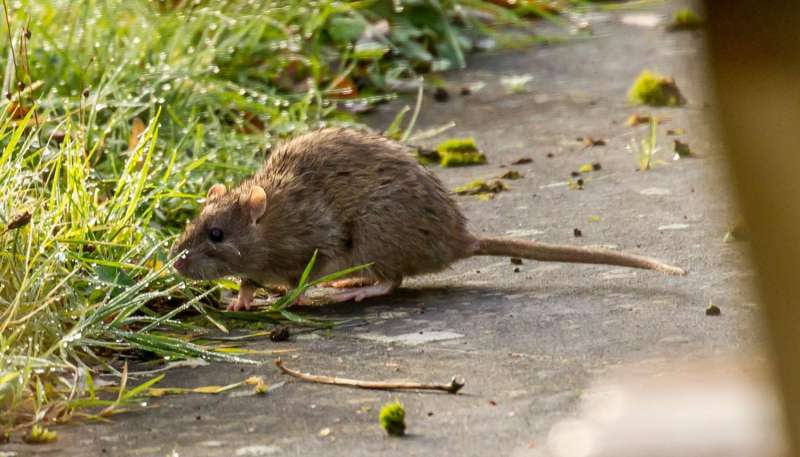April 20, 2016 weblog
Why a rat eradication attempt on Henderson Island failed

(Phys.org)—A team of researchers the University of Cambridge and the Royal Society for the Protection of Birds has conducted a case study of a failed rat eradication project on an island in the South Pacific. In their paper published in Royal Society Open Science, the team reports that it has found that the failure was not due to migration of new rats to the island, or some of the rats being able to withstand the poison used, but instead because some of the rats never ate the poison and then began reproducing at a rapid pace.
Approximately 800 years ago Polynesian sailors introduced Pacific rats to Henderson Island, where they rapidly multiplied. Today there are no people living on the islands but lots of rats, which is a problem, because they eat the chicks of endangered birds. For that reason, a team with the Royal Society for the Protection of Birds and the government of the Pitcairn Islands decided to solve the problem by killing every rat on the island. A study was conducted and in 2011, a helicopter flew over the island and dropped seventy-five metric tons of rat poison at pre-chosen locations—a strategy that had been used successfully on other islands in the South Pacific. Unfortunately, this effort did not prove successful. Today the rat population is back to where it was before the eradication effort was made—approximately 100,000.
In their case study, the researchers conducted DNA tests to make sure the rats that are there now are not descendents of rats from somewhere else—they were not which ruled out migration of new rats as the problem. The team also ran multiple tests and determined that it was not possible that some of the rats could have survived after eating the rat poison. That left only one possible reason for the failure—some of the rats had not eaten the rat poison, and thus were not killed. After careful analysis, the team suggests that approximately 50 rats likely survived the rat drop and that it was likely due to an unexpected rainfall that had occurred just prior to the rat poison dump—fruit and flowers were plentiful which made the rat poison less of an attractive option. The large number of rats today is the result of the rapid pace of reproduction of the rats—one female bears up to six pups every few months. The Royal Society is not ready to give up however, they plan to try again, but next time around will plan their attack around the weather.
More information: W. Amos et al. Rat eradication comes within a whisker! A case study of a failed project from the South Pacific, Royal Society Open Science (2016). DOI: 10.1098/rsos.160110
Abstract
To enhance their conservation value, several hundred islands worldwide have been cleared of invasive alien rats, Rattus spp. One of the largest projects yet undertaken was on 43 km2 Henderson Island in the Pitcairn group, South Pacific, in August 2011. Following massive immediate mortality, a single R. exulans was observed in March 2012 and, subsequently, rat numbers have recovered. The survivors show no sign of resistance to the toxicant used, brodifacoum. Using pre- and post-operation rat tissue samples from Henderson, plus samples from around the Pacific, we exclude re-introduction as the source of continued rat presence. Microsatellite analysis of 18 loci enabled comparison of genetic diversity of Henderson rats before and after the bait drop. The fall in diversity measured by allele frequency change indicated that the bottleneck (Ne) through which the breeding population passed was probably around 50 individuals, representing a census population of about 60–80 animals. This is the first failed project that has estimated how close it was to success.
Journal information: Royal Society Open Science
© 2016 Phys.org

















